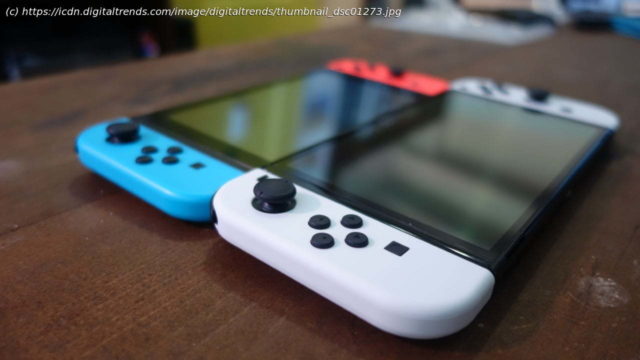Now that the Switch OLED is here, let’s compare it to the original Switch model. Here’s what you need to know when deciding between the Switch and Switch OLED.
The Nintendo Switch OLED serves as yet another iteration of the handheld hybrid, boasting an improved screen and a boatload of bells and whistles. At first glance, the OLED model might not appear too different from the original Switch, but it certainly has a variety of new features you should be aware of, especially if you’re thinking of upgrading. Given the original Switch is nearly five years old at this point, it’s a great time to grab an OLED. Or perhaps you’re considering purchasing a Switch for the first time. Either way, it’s good to know the difference between the original and the OLED, so you can make an informed purchase — and that’s where we come in. Here, we’ll compare the original Switch to the new OLED model, with details that will hopefully help you choose one over the other. Recommended reading: The Switch and the Switch OLED have a lot in common, from their design to their features. However, there are some distinct differences you should be aware of, as each system is targeted at slightly different audiences. The most important factor to consider is the OLED’s screen, which makes colors stand out more and is noticeably larger than the one on the original model. As its name suggests, it boasts a 7.0-inch OLED screen, as opposed to the 6.2-inch LCD screen on the original. Aside from being larger, the OLED screen is unique in that it provides a backlight to illuminate pixels even further. What this means is that colors will appear more vibrantly, making the original screen seem dimmer by comparison. To players who plan on playing in handheld mode more, the OLED should be your first choice. You’ll also gain access to a built-in LAN port within the OLED’s dock, which makes it much more convenient to connect an Ethernet cable to it. By default, all Nintendo Switch consoles support Wi-Fi, but connecting via an Ethernet cable gives you better, more stable internet speeds. With the original Switch model, you can connect a LAN adapter to it via USB, but this can be costly and less convenient. So, if you’re planning on playing online frequently, the OLED might be for you. Do note you can only take advantage of the wired connection while docked. In handheld mode, both the Switch and Switch OLED must use Wi-Fi. One of the downsides of the original Switch is its flimsy, thin kickstand.






